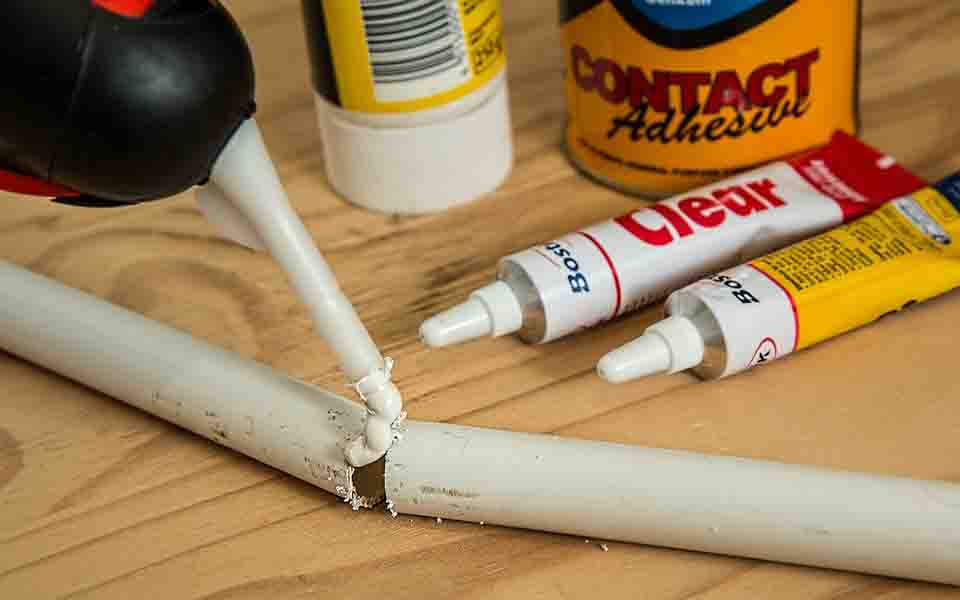Introduction to Silicon Grease and Silicon Ointment
Release Time: 2023-01-31 10:39:35
Introduction to Silicon Grease and Silicon Ointment

Some glues made of silicon greases
Cited from: https://pixabay.com/zh/photos/repair-glue-fix-adhesive-891422/
Photo Cover cited from: https://pixabay.com/zh/photos/wood-glue-work-laminate-embarrassed-596161/
Not only the silicone oil, silicone itself could be processed to many different types of other products. We usually refer the silicone oil as the raw products which mean they have not been processed much and this category includes both of linear silicone oil and many others like modified silicone oil. The other processed ones, are processed by adding thickeners, surface active agents, solvents and additives. They will go through several specific manufacturing steps to get the final mature greases, lubricants and solvents. For example, silicone greases silicone ointments, release agents and blocking agents. It is after the silicone oil has been processed, not only the forms of them have been changed but also the properties are changing a lot. Therefore, the new products could be applied in a wider range of industries and has a better effect and higher efficiency. Today, their market shares could be directly compared to the percentage of silicone oil.
We are going to introduce more about silicon grease and silicon ointment more in this article.
Properties & Applications
Both of them are manufactured by mixing the base silicone oil with adding thickeners, stabilizing agents and modified additives. From the daily usage habits, people sometimes call some types of soaps which are lubricants as silicon greases; and to call silica which do not belong to soaps as silicon ointments (or also called silicon compounds). Besides these, some people also give different definitions on silicon grease and silicon ointment: silicone grease is the kind of lubricant grease which is half-structural, which is used to lubricant and protect metal and the surface of metal; while the silicon ointment is used to protect & lubricant the contact sides between metals and non-metals.
As for to compare the efficiency of lubricant between silicone grease and silicone oil, the silicone oil needs to be continuously added to maintain the lubricity while silicon grease does not need; the total consumption amount of silicone oil is way larger than silicon grease; the lubricity system of silicone oil is more complex; The sealing system of silicone oil is more complex as well. However, there are also some evident shortages for using silicon greases to lubricant- silicon grease cannot remove dirt and other sundries; it has a very low cooling ability and it has a bigger friction loss; its high-speed limitation is pretty low.
Silicon grease and ointment consist of at least two parts, and usually four. They are base oil, thickeners, stabilizing agents and modified additives.
The applications of silicon grease and ointments are like general silicone greases, anti-heating lubricant silicon grease, sealing silicon ointment, optical silicon ointment and many others.
The max temperature of usage of silicon grease is determined by the melting points of thickeners, also it is determined by the type of used base silicone oil. Today’s silicon grease which is mainly sold on the market is using methyl phenyl silicone oil as the base oil. By applying low phenyl silicone oil, the corresponding silicon grease could be used in low-temperature conditions and the working temperature is usually between -60 and 180; By using medium phenyl silicone oil, the grease is applied more in high-temperature condition with a temperature range from -30 to 200℃.
Silicon grease has good properties like lubricity and sealing ability.
As for silicon ointments, their properties are decided by the quantity and types of base oil, thickeners and modified additives. By changing the type of silicone oil and the quantity of added silica, we could make different types of silicon greases. They are mainly aimed at electric isolation, anti-humidity, lubricity, sealing and anti-shocking; they could also be used to make heat conduction, optical applications, release agents and defoamer agents. The silicon ointment which is thickened by silica has good temperature resistance.
The main usages of silicon greases include ordinary lubricants which are mainly used for steel-steel, steel-other metal, plastic lubricants which are mainly for lubricity between engineering plastics and the ones for adhesiveness.
For silicon ointments which contains silica has excellent properties like anti-heating, anti-weather and anti-chemical. Thus, it could be used as the electric isolation & anti-humidity materials, sealing materials and some other chemicals used during manufacturing processes.
